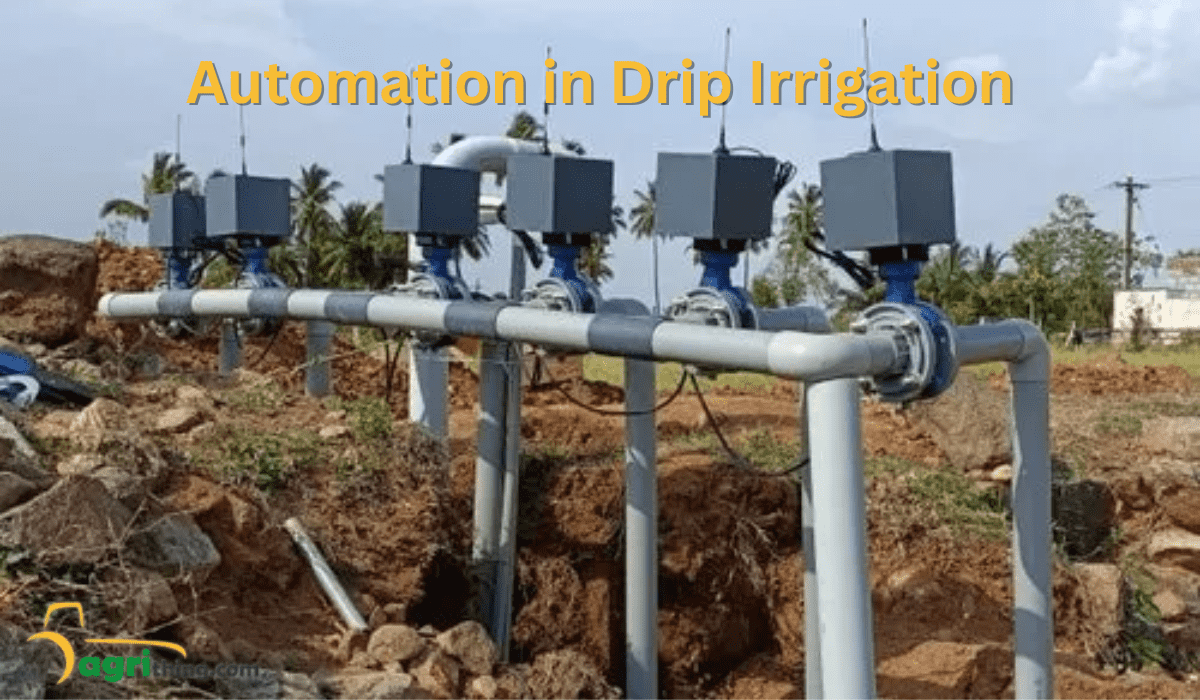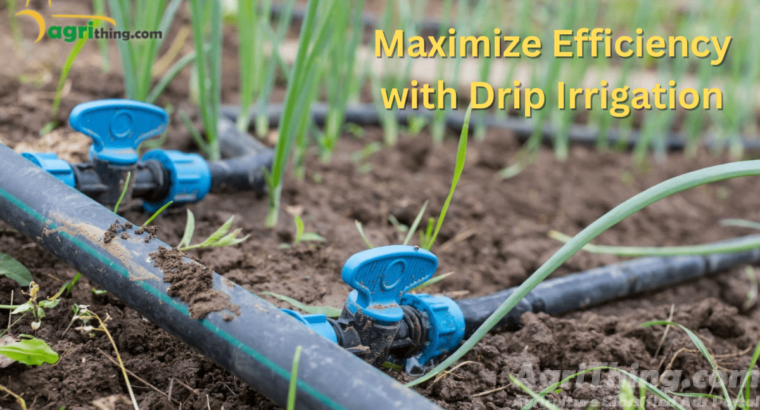How to Maximize Efficiency with Drip Irrigation: Comprehensive Guide
Drip irrigation is a type of irrigation system that delivers water directly to the roots of plants, providing them with a controlled and efficient water supply. It involves using narrow tubes or pipes with small openings called emitters or drippers. This article will guide you on How to Maximize Efficiency with Drip Irrigation in Pakistan.
These drippers release water slowly and evenly near the base of each plant. This method allows for precise water application, reducing waste and optimizing water usage. This article will discuss how to Maximize Efficiency with Drip Irrigation. Let’s start.
Table of Contents
Maximizing Efficiency with Drip Irrigation-Tips and Tricks
Drip irrigation is a revolutionary technique. It has transformed the way we irrigate our crops and gardens. It offers a more efficient and precise method of delivering water directly to plant roots. As a result, significant water savings and improved plant health. Here are some tips and tricks to maximize efficiency with drip irrigation:
Design an Efficient System
- Analyze your site’s specific needs and layout before designing the system.
- Select high-quality drip irrigation components, including pipes, emitters, and filters.
- Ensure proper spacing and layout of drip lines and emitters to evenly distribute water.
Use Water Wisely
- Monitor and manage water usage by scheduling irrigation based on plant needs.
- Incorporate soil moisture sensors to determine when and how much to irrigate.
- Avoid overwatering by adjusting the irrigation schedule according to weather conditions.
Maintain System Performance
- Regularly inspect and clean emitters and filters to prevent clogging.
- Check for leaks, damaged tubing, or faulty emitters and repair them promptly.
- Perform routine system maintenance to ensure optimal performance.
Optimize Nutrient Delivery
- Incorporate fertilizers and nutrients directly into the drip irrigation system.
- Choose the right type and dosage of fertilizers based on plant requirements.
- Monitor nutrient levels and adjust the application as needed.
Mulching and Soil Management
- Apply organic mulch around plants to reduce evaporation and conserve soil moisture.
- Maintain proper soil structure through regular cultivation and amendment.
- Implement soil conservation practices to prevent erosion and promote healthy root growth.


Consider Automation
- Install automation and control systems to manage irrigation timing and duration.
- Utilize weather-based controllers that adjust irrigation based on local weather conditions.
- Use remote monitoring technology to track system performance and make adjustments as needed.
Educate and Train
- Provide training to farmers and gardeners on drip irrigation techniques and best practices.
- Educate users about the importance of water conservation and efficient irrigation methods.
- Share resources and information on drip irrigation maintenance and troubleshooting.
Monitor Soil Moisture
- Use soil moisture sensors or tensiometers to monitor the moisture level in the root zone.
- Adjust irrigation frequency and duration based on the moisture readings.
- Aim to keep the soil moisture within the optimal range for the specific grown plants.
Implement Zone Irrigation
- Divide your irrigation system into zones based on plant water requirements.
- Group plants with similar water need together in each zone.
- Adjust each zone’s irrigation schedule and duration to avoid over or under-watering.
Consider Subsurface Drip Irrigation
- Explore the option of subsurface drip irrigation (SDI) for specific crops or situations.
- SDI reduces water loss through evaporation and minimizes weed growth.
- It also allows for better control over water and nutrient delivery to the plant roots.
Regularly Inspect and Maintain Emitters
- Check the emitters regularly for proper functioning and uniform water distribution.
- Clean or replace clogged or damaged emitters to ensure optimal irrigation.
- Use emitter flow rate regulators to maintain consistent water flow across the system.
Cover Ground Around Plants
- Apply organic mulch around the base of plants to conserve moisture and suppress weed growth.
- Mulch helps regulate soil temperature, reducing water evaporation from the soil surface.
- It also improves soil structure and fertility over time.
Perform Regular System Audits
- Conduct periodic audits to evaluate the overall efficiency of your drip irrigation system.
- Check for leaks, pressure variations, or areas of inadequate coverage.
- Make necessary adjustments or repairs to optimize system performance.
Consider Pressure Compensating Emitters
- Pressure-compensating emitters deliver a consistent flow rate despite changes in water pressure.
- They ensure uniform water distribution even in areas with varying topography or long irrigation lines.
Schedule Irrigation for Early Morning or Evening
- Irrigate during the cooler parts of the day to minimize water loss due to evaporation.
- Early morning or evening irrigation also reduces the risk of fungal diseases caused by prolonged moisture on plant foliage.
Finally, maximizing efficiency with drip irrigation is an ongoing process. Maximizing efficiency with drip irrigation requires careful planning and regular maintenance with proper water management. Monitor, assess, and adjust to ensure optimal water usage, healthy plants, and sustainable irrigation practices.
Remember, implementing these tips and tricks can optimize water usage, improve plant health, and promote sustainable agriculture practices.
Frequently Asked Questions(FAQs)
What are the advantages of drip irrigation over traditional irrigation methods?
Drip irrigation offers several advantages, including reduced water waste, improved plant health, precise water application, minimized weed growth, and efficient nutrient delivery.
How to maximize efficiency with drip irrigation?
By following all the above tips, you will know the secret of maximizing efficiency with drip irrigation.
How do I determine the appropriate spacing for drip lines and emitters?
The spacing of drip lines and emitters depends on soil type, plant water requirements, and water pressure. It is recommended to consult irrigation experts or refer to spacing guidelines provided by manufacturers.
Can I automate the drip irrigation system to adjust watering based on weather conditions?
Automation and control systems can be installed to adjust irrigation timing and duration based on local weather conditions. Weather-based controllers are particularly useful in optimizing water usage and adapting to changing weather patterns.
What maintenance tasks are required for drip irrigation systems?
Regular maintenance tasks for drip irrigation systems include inspecting and cleaning emitters and filters, checking for leaks or damaged tubing, and performing routine system audits to ensure optimal performance. Prompt repair of any issues is essential.
Is mulching necessary in drip irrigation systems?
Mulching is highly recommended in drip irrigation systems as it helps conserve soil moisture, suppress weed growth, regulate soil temperature, and improve soil structure and fertility over time. Organic mulch is commonly used for these purposes.
Conclusion
Maximizing efficiency with drip irrigation is crucial for water conservation and enhancing crop health and productivity. Farmers and gardeners can unlock the full potential of this irrigation method by mastering the components, design considerations, and maintenance practices. Learn “How to Maximize Efficiency with Drip Irrigation” to transform landscapes and promote a greener, more sustainable future.
Get your 8/12 PVC Branch Pipe Micro Spray for Drip Irrigation, Garden Irrigation, and more at Agricomplex. Don’t wait, shop now!
Drip irrigation system





